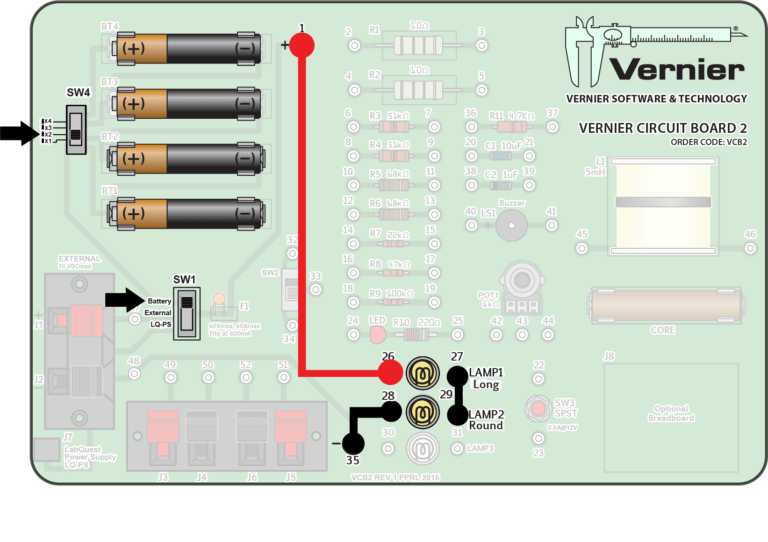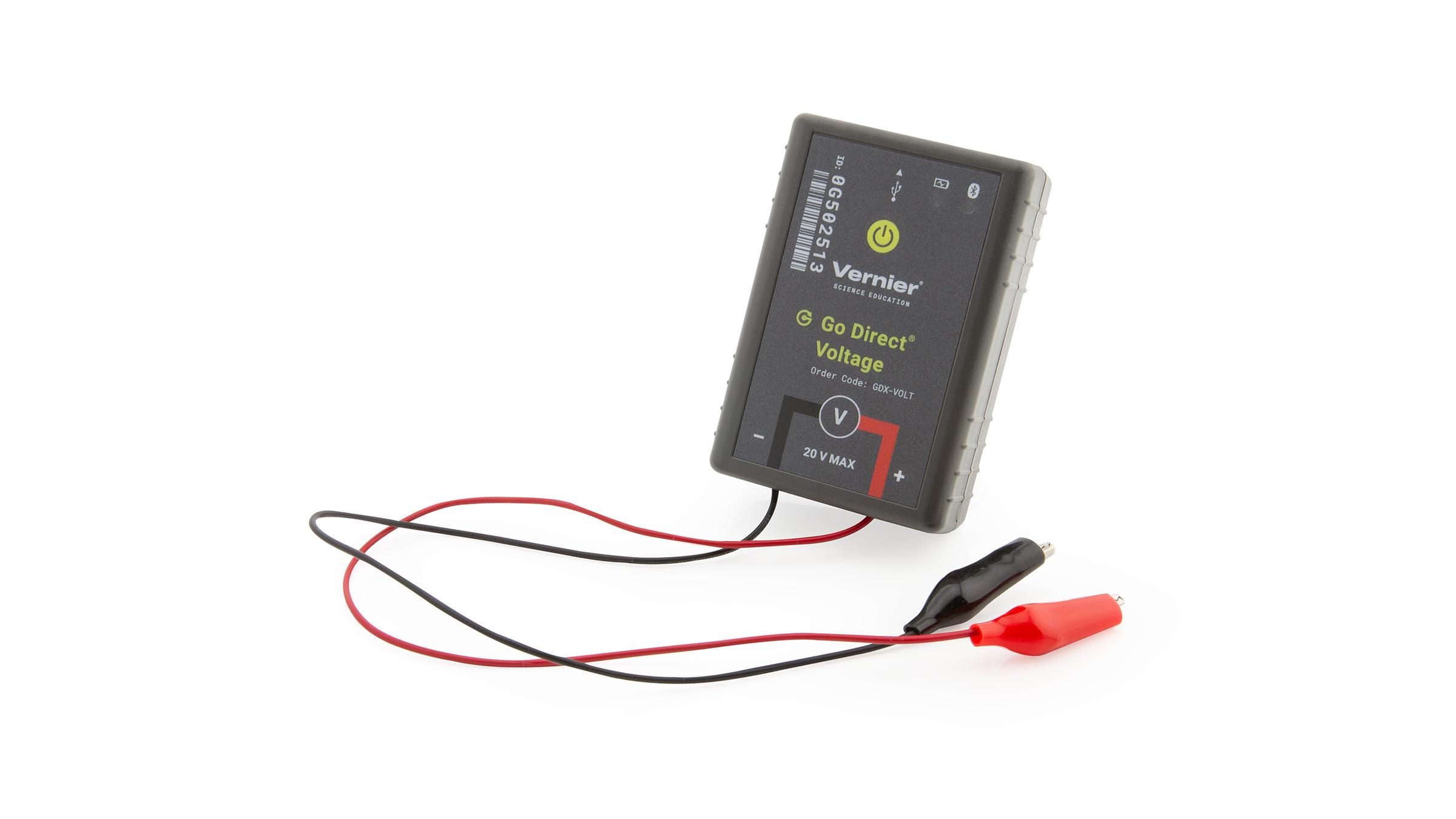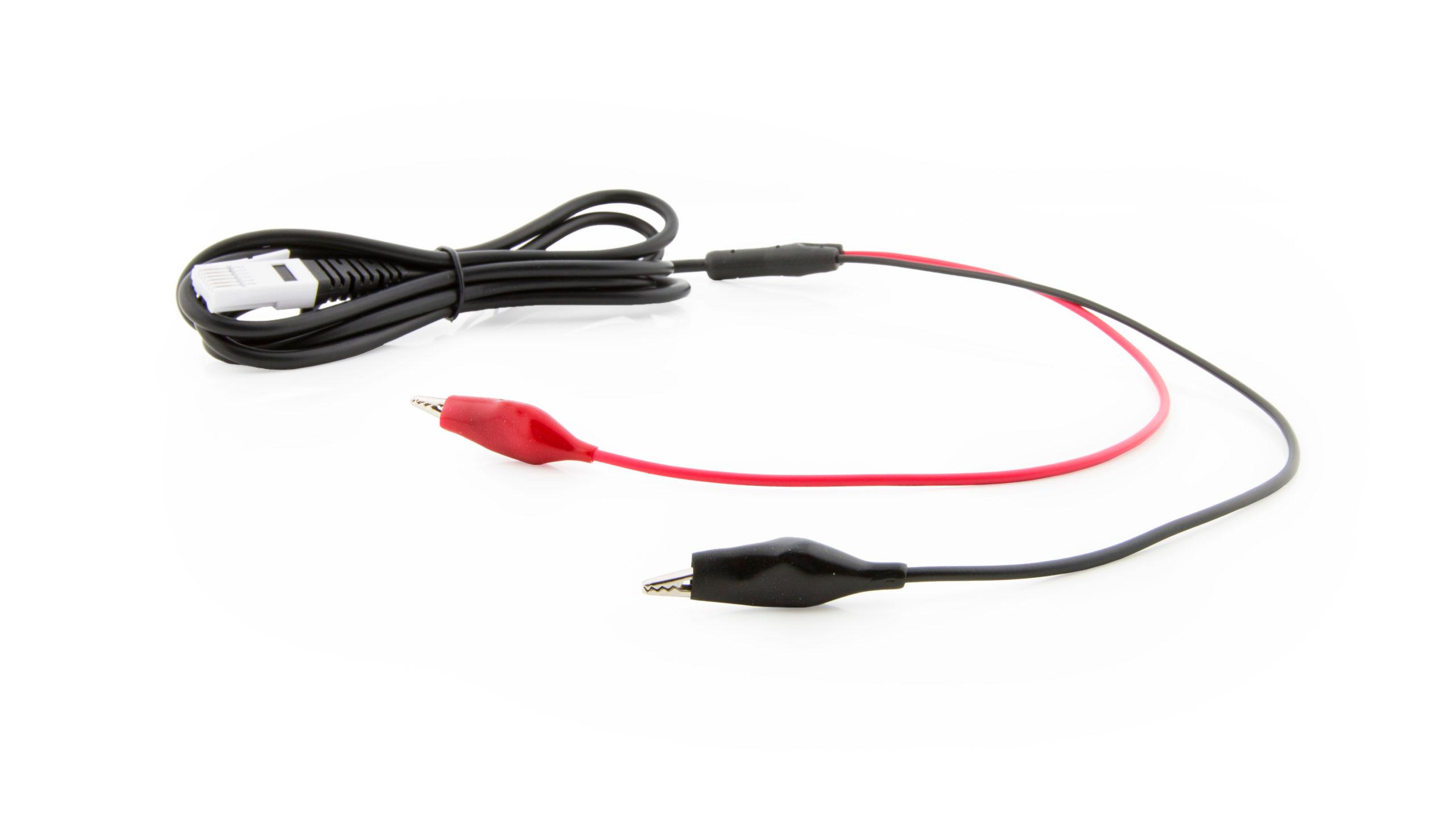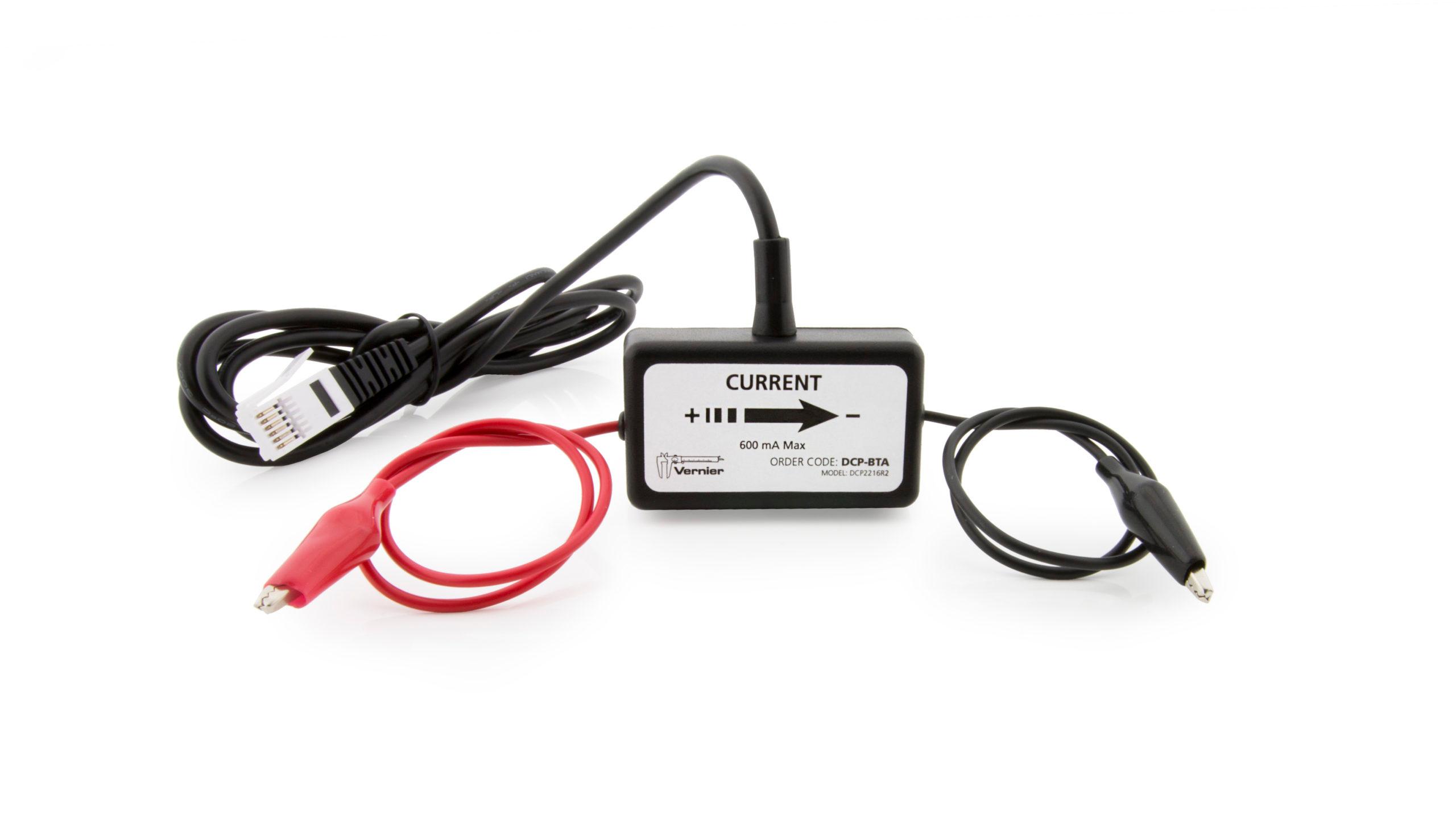Series and Parallel Circuits
Experiment #10 from Advanced Physics with Vernier — Beyond Mechanics
- Subject
- Physics

Introduction
Ohm’s law describes the relationship between electric potential, current, and resistance. In this experiment, you will examine how combinations of batteries and resistors affect both the energy and the flow rate of charge in electrical circuits.
Objectives
In this experiment, you will
- Measure potential difference and current at various places in series and parallel circuits.
- Track the energy/unit charge and the current as charge flows through batteries and resistors in series and parallel circuits.
- Determine the relationship between potential difference and resistance in series circuits.
- Determine the relationship between current and resistance in the branches of a parallel circuit.
- Determine expressions for equivalent resistance for both series and parallel circuits.
- Account for differences in bulb lighting in series and parallel circuits.
Sensors and Equipment
This experiment features the following sensors and equipment. Additional equipment may be required.
Ready to Experiment?
Ask an Expert
Get answers to your questions about how to teach this experiment with our support team.
- Call toll-free: 888-837-6437
- Chat with Us
- Email support@vernier.com
Purchase the Lab Book
This experiment is #10 of Advanced Physics with Vernier — Beyond Mechanics. The experiment in the book includes student instructions as well as instructor information for set up, helpful hints, and sample graphs and data.







